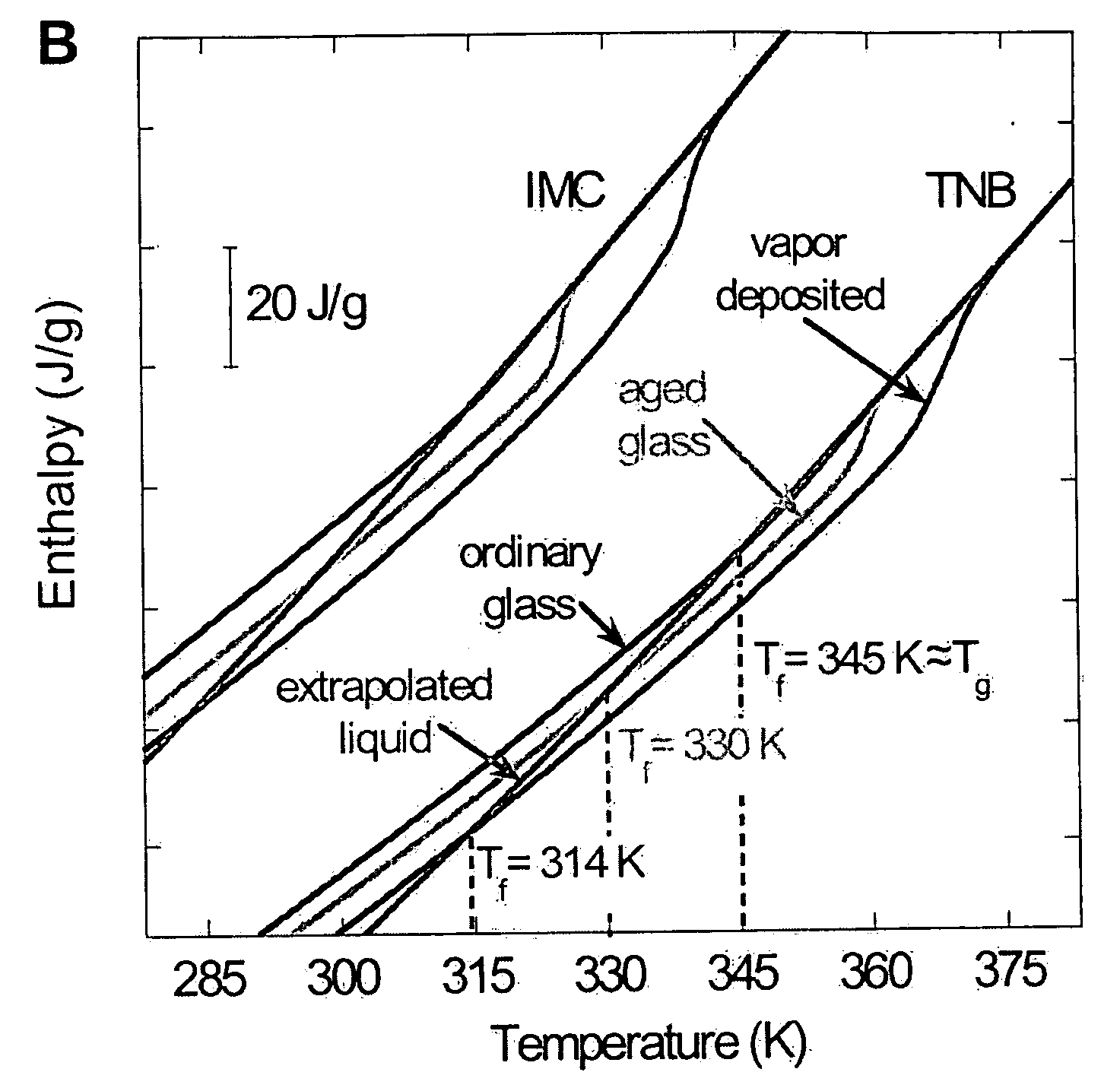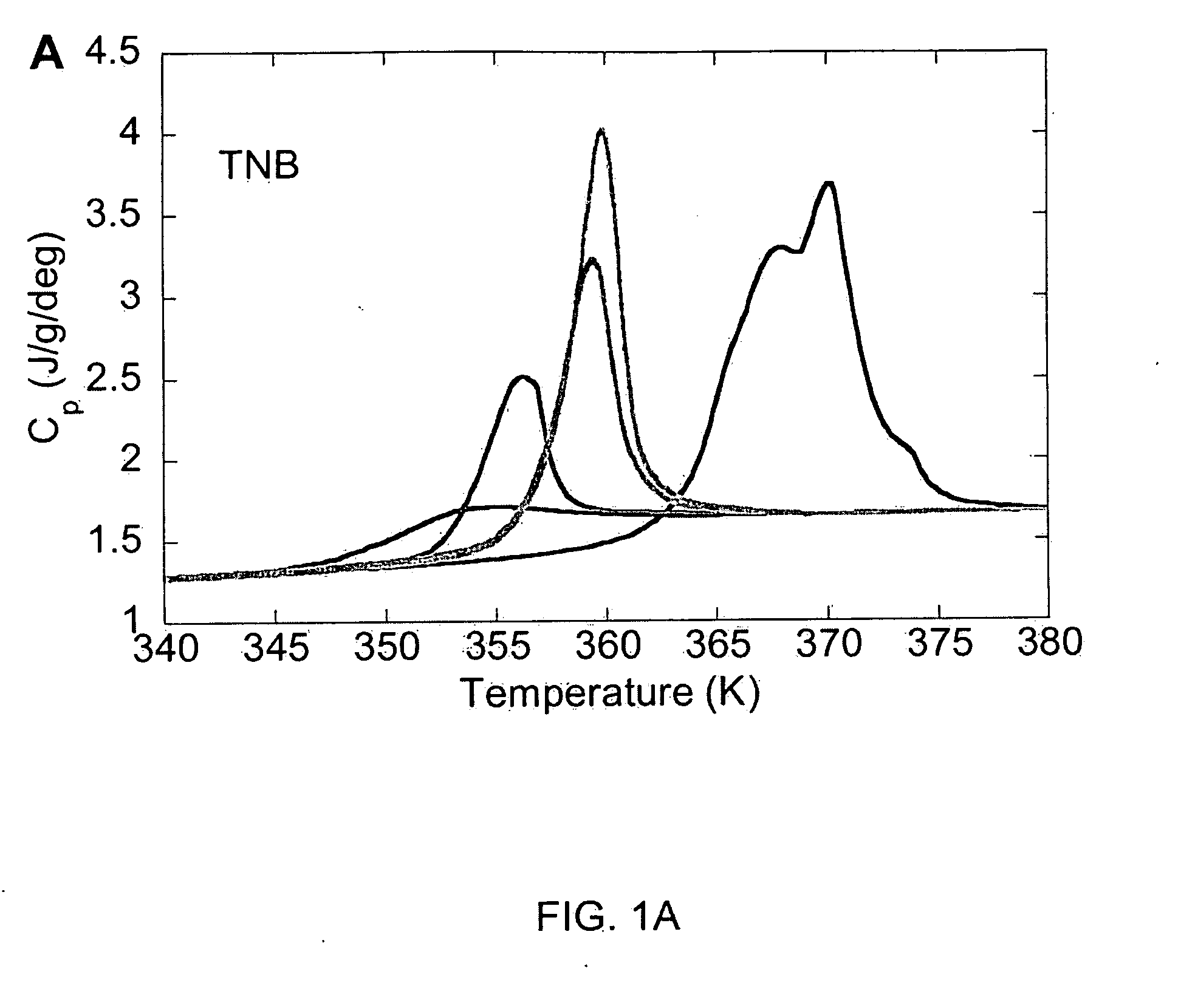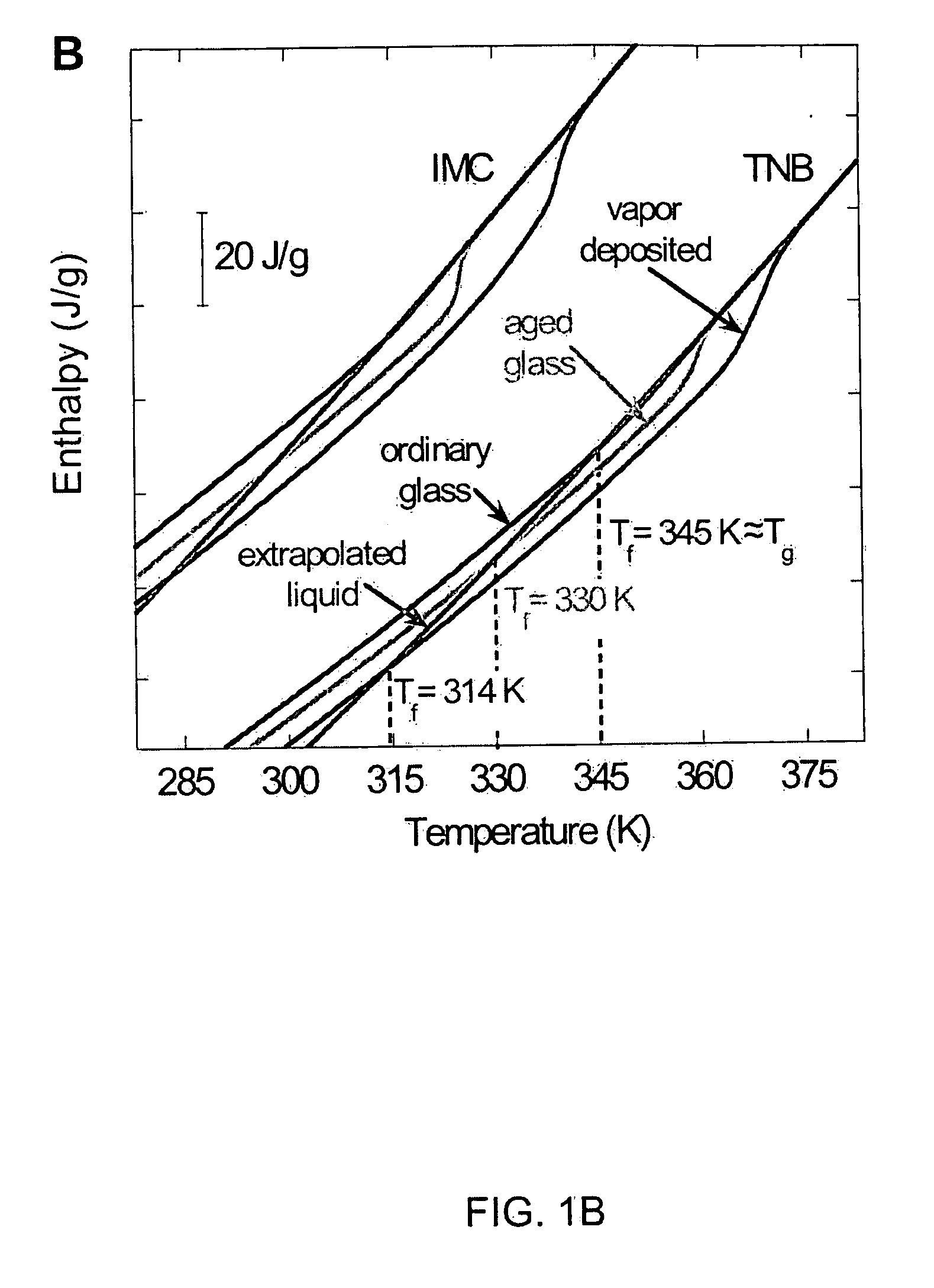Unusually stable glasses and methods for forming same
a technology stable molecular structure, which is applied in the field of stable molecular glasses, can solve the problems of inaccessible technology for stabilizing the present vapor-deposited solids, unable to achieve the stabilizing effect of liquid cooling methods, and comparable liquid cooling methods that could take hundreds, thousands or even tens of thousands of years to produce the same. , to achieve the effect of improving extraordinary thermodynamic and kinetic stability, and high density
- Summary
- Abstract
- Description
- Claims
- Application Information
AI Technical Summary
Benefits of technology
Problems solved by technology
Method used
Image
Examples
example 1
Unusually Stable TNB and IMC Glasses
[0032]Materials
[0033]1,3-bis-(1-naphthyl)-5-(2-naphthyl)benzene (also referred to as ααβ-tris-naphthylbenzene, tris(naphthylbenzene), or TNB, along with its partially deuterium substituted analog, were synthesized using procedures analogous to those described previously (C. M. Whitaker, R. J. McMahon, J. Phys. Chem. 100, 1081 (1996)). (Note that the literature prior to 1996 contains several papers characterizing a substance identified as 1,3,5-tri-α-naphthylbenzene. Whitaker and McMahon established that these earlier studies were almost certainly performed on ααβ-d TNB (C. M. Whitaker, R. J. McMahon, J. Phys. Chem. 100, 1081 (1996)).) Indomethacin (“IMC”) was purchased commercially (Aldrich), and used without further purification. IMC is hygroscopic, and care Was taken to maintain sample dryness.
[0034]Vapor Deposition
[0035]Physical vapor deposition was used to create glasses of IMC, and of h-TNB and d-TNB. Samples were prepared by deposition onto ...
example 2
Reduced Water Uptake by Unusually Stable Glasses
[0069]This example demonstrates the reduced water uptake that is characteristic of stable glasses made in accordance with the present methods. The stable glass was prepared by vapor depositing IMC onto an aluminum substrate using the method described in Example 1, above. The substrate was held at a temperature of 265 K and a deposition rate of 2 Å / s was used. For comparison, two “ordinary” glass samples were also prepared. These were formed by vapor-deposition at 315 K. In addition, water uptake was measured for a crystalline IMC glass.
[0070]Weight change as a function of relative humidity was measured for the ordinary glasses, stable glass, and crystalline IMC. The results are shown in FIG. 10. The multiple curves for a given sample are from cycles where the relative humidity (RH) was stepped up and back down. A TA instruments Q5000SA sorption apparatus was used to induce relative humidity step changes and measure the steady-state wei...
example 3
Evolution from an Unusually Stable Glass to a Supercooled Liquid
[0072]In this experiment, time-dependent heat capacity measurements were obtained to demonstrate the kinetic stability of the present glasses as evidenced by how long it takes them to transform from a solid glass into a supercooled liquid.
[0073]The stable glass was prepared by vapor depositing IMC onto an aluminum substrate using the method described in Example 1, above. The substrate was held at a temperature of 265 K and a deposition rate of 2 Å / s was used. For comparison, an “ordinary” glass sample was also prepared by melting the vapor-deposited IMC glass and cooling the resulting liquid at a rate of 40 K / min.
[0074]The kinetic stability of the stable IMC glass was explored in quasi-isothermal temperature modulated differential scanning calorimetry (qi-TMDSC) experiments. In these experiments a TA instruments Q2000 DSC was used. After vapor deposition, the samples were placed in the DSC at room temperature. A tempera...
PUM
| Property | Measurement | Unit |
|---|---|---|
| fictive temperature | aaaaa | aaaaa |
| fictive temperature | aaaaa | aaaaa |
| fictive temperature | aaaaa | aaaaa |
Abstract
Description
Claims
Application Information
 Login to View More
Login to View More - R&D
- Intellectual Property
- Life Sciences
- Materials
- Tech Scout
- Unparalleled Data Quality
- Higher Quality Content
- 60% Fewer Hallucinations
Browse by: Latest US Patents, China's latest patents, Technical Efficacy Thesaurus, Application Domain, Technology Topic, Popular Technical Reports.
© 2025 PatSnap. All rights reserved.Legal|Privacy policy|Modern Slavery Act Transparency Statement|Sitemap|About US| Contact US: help@patsnap.com



